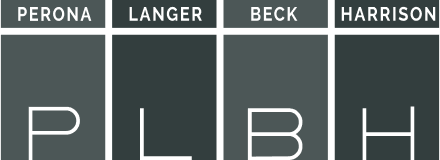
When an employee is injured on the job, the goal is typically to recover and return to work as quickly as possible. However, for some employees, their injuries may prevent them from returning to their previous position.
In such cases, vocational rehabilitation can play a critical role in helping injured workers transition into new job opportunities. Understanding how vocational rehabilitation works within California’s workers’ compensation system can help employees access the resources they need to rebuild their careers. Contact PLBH at (800) 435-7542 for a legal consultation.
What Is Vocational Rehabilitation?
Vocational rehabilitation is a program designed to assist injured workers who are unable to return to their previous jobs due to a workplace injury or illness. This service helps employees acquire new skills or training to transition into a different role or career path. The goal is to enable the injured worker to re-enter the workforce in a capacity that accommodates their physical limitations.
How Does Vocational Rehabilitation Work?
In California, vocational rehabilitation services are part of the workers’ compensation benefits for injured employees who are permanently unable to return to their previous job. These services can include:
- Job training or retraining programs
- Educational courses to develop new skills
- Resume writing and interview preparation
- Job placement assistance
- Support for obtaining professional certifications
These services are offered to help injured employees find suitable employment that matches their new physical capabilities.
Eligibility for Vocational Rehabilitation
Not every injured worker will require vocational rehabilitation. This service is specifically available to employees whose injuries prevent them from returning to their previous jobs. For workers who are eligible, their doctor must determine that they are unable to perform their old job duties due to permanent physical limitations.
When Are Vocational Rehabilitation Benefits Offered?
Vocational rehabilitation benefits are generally available when:
- The employee has reached maximum medical improvement (MMI), meaning that their condition has stabilized and is not expected to improve further.
- The worker’s treating physician has determined that they cannot return to their previous position but may be able to work in a different capacity with retraining.
Supplemental Job Displacement Benefits (SJDB)
In California, the traditional vocational rehabilitation program was replaced by Supplemental Job Displacement Benefits (SJDB). The SJDB provides injured workers with a voucher that can be used for education, training, and career counseling to help them transition into a new role.
How the SJDB Voucher Works
The SJDB voucher is worth up to $6,000 and can be used for:
- Tuition at a state-accredited school or training program
- Licensing or certification fees
- Books, supplies, and tools for education or retraining
- Career counseling and job placement assistance
The voucher is available if your employer does not offer you a suitable position that accommodates your physical limitations after you’ve reached MMI.
How to Use the SJDB Voucher
Once you receive the SJDB voucher, it’s important to use it effectively to maximize your career opportunities. Some strategies for making the most of your voucher include:
- Research training programs: Look for programs that align with your interests and offer a clear path to employment in a new field.
- Consider high-demand careers: Explore industries that are growing and have a strong demand for workers. This can increase your chances of finding a job once you complete your training.
- Work with a career counselor: A career counselor can help you navigate the retraining process and provide guidance on how to re-enter the workforce successfully.
Benefits of Vocational Rehabilitation for Injured Workers
Vocational rehabilitation offers several benefits to employees who cannot return to their previous jobs:
- Increased job opportunities: With new skills and training, injured workers can transition into roles that better suit their physical capabilities.
- Higher earning potential: By gaining new certifications or training, injured workers may qualify for higher-paying positions than they would have otherwise been able to obtain.
- Improved quality of life: Finding meaningful work that accommodates your physical limitations can help you maintain financial stability and personal fulfillment.
How a Lawyer Can Help with Vocational Rehabilitation
Navigating the workers’ compensation process, including vocational rehabilitation and the SJDB voucher, can be complex. An experienced workers’ compensation attorney can help you understand your rights, ensure you receive the full benefits you’re entitled to, and assist with the following:
- Filing for SJDB benefits: Your lawyer can help you apply for the SJDB voucher if you’re eligible.
- Ensuring appropriate vocational rehabilitation: An attorney can advocate for you to receive adequate training and support during your vocational rehabilitation process.
- Resolving disputes with your employer: If your employer fails to offer you a suitable job after your injury, a lawyer can help ensure that your rights are protected.
Contact PLBH for Assistance with Vocational Rehabilitation
If you’ve suffered a workplace injury that prevents you from returning to your previous job, the team at PLBH can help you navigate the workers’ compensation process and access the vocational rehabilitation services you need. Our attorneys are dedicated to ensuring that injured workers receive the support they deserve during recovery.
Call (800) 435-7542 today to schedule a consultation and explore your legal options for vocational rehabilitation. Let us help you rebuild your career and secure a brighter future.
